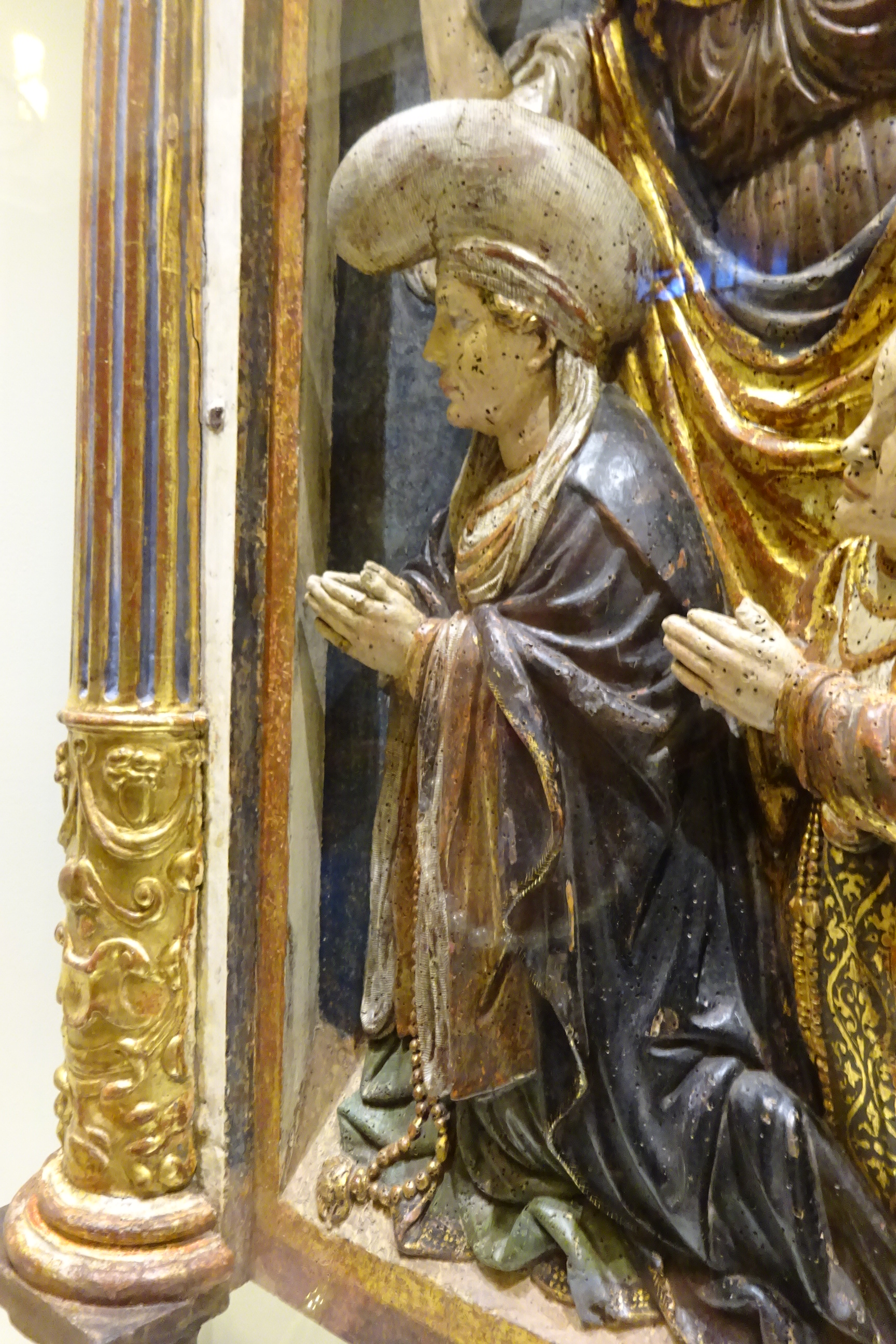Basque ethnography at a glance
![Boda de hidalgos en Begoña [Noble wedding in Begoña] by Francisco Vázquez de Mendieta, 1607](https://www.labayru.eus/wp-content/uploads/2018/03/bodadehidalgosenbegoc3b1a.jpg)
Boda de hidalgos en Begoña [Noble wedding in Begoña] by Francisco Vázquez de Mendieta, 1607.
Women’s hairdo and headwear are, to put it briefly, simple fashion statements to complement their clothing in the modern western world today; however, by no means was it always so. In ancient times the way women styled their hair and covered their head was distinctive of their social and civil status, and what is more, of the role they held and the consideration they received from a strongly hierarchical society. Within the rigid, stratified society, and subsequently in the traditional world until late into the 19th century, headdresses were worn by women to reflect their civil status.
A type of hood formed by rolling bands of ruffled fabric about the head and fastened under the chin can be admired at St Mary’s in the neighbourhood of Elexalde in Galdakao (Bizkaia) and St Columba in Argandoña (Vitoria-Gasteiz).
That and other models gave way in the 14th century to a great variety of linen headdresses worn in villages along the Gulf of Bizkaia, all most splendid by their shapes and artistry. These women would be recognized and acknowledged by locals and foreigners here and beyond the territory of Bizkaia by their headgear (tocada, tontorra, curbitzeta, juichia or jucichia, moco or sapa), featuring time and again in numerous publications.
The richness of their shapes can be fully appreciated in three oil paintings by Francisco Vázquez de Mendieta painted around 1600. With regard to their shapes, they show overall a clear predominance of the Gothic trend to stylize the silhouette, initiated in the 15th century with the fashionable French-Burgundian headdresses.

Detail of the 16th-century retable at St Mary of the Assumption in Xemein (Bizkaia). Courtesy of Amaia Mujika.
Its function was affected by the pointed shapes of headwraps worn by women in Bizkaia, interpreted by the ecclesiastical authority as another instance that the body of women is ‘the devil’s door’ and hence became prohibited by bishops in the Basque dioceses. Nonetheless, the women of that time challenged the regulations over and over, for they looked upon their headdresses and dressmaking as part of the costume of their country and made its preservation subject of lawsuits and sanctions, for which they were mostly supported by the local authorities.
The use of headwear, known at least since the 14th century, starts to decline from the 17th century and totally disappears in the first half of the 18th century, as reported by the historian Iturriza.
The volume of the ornamental linen covering for the head is simplified thereafter, and its use limited to folk costume, resulting in the white linen cloth (sabanilla, buruko-zapia, buruko-zuria, izaratxoa) used until the first quarter of the 20th century by Basque housewives and considered an identifying element of clothing.
Models can be grouped according to their design, ranging from the tall truncated cone tied at the front, reminiscent of medieval headwear, to diverse variants that flowed behind and were secured over the head, or the bun with one, two or even three loose ends (belarriak) above.
The last generation of women who by tradition covered their heads wore, for the most part, black or half-mourning to match the tone of their dress, the majority of them being elderly widows and survivors of the civil war.
Finally, mention should be made of the mantilla (mantelina), a piece of clothing imposed by the ecclesiastical authority to maidens and women contrary to the custom of our country and much disputed in the traditional Basque society.
The linen headdresses that have historically identified Basque women are now relegated to folklore.
Amaia Mujika – Euskal Museoa Bilbao Basque Museum
Translated by Jaione Bilbao – Language Department – Labayru Fundazioa

